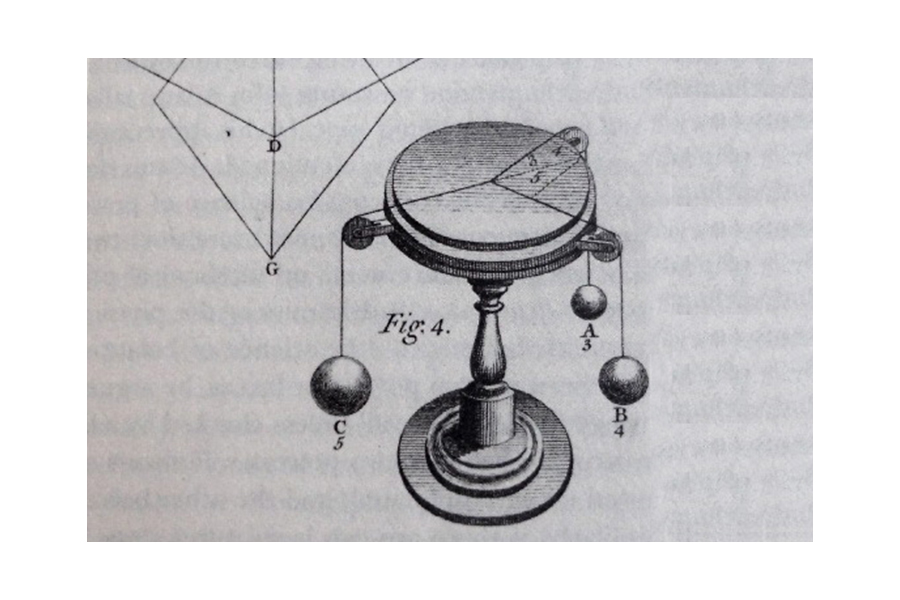When a projected Bitcoin logo shone on the ECB building in Frankfurt late in the evening at the end of March, the central bank’s employees had long since gone to bed. They missed a special moment that didn’t make it into the mainstream media, but went viral on Twitter. It was a startling moment. But not a revolution. The gatekeepers didn’t notice any intruders. No one had stormed the massive metal gate; it wasn’t even damaged. A discreet “Study Bitcoin,” by a crew led by Bitman Bob, merely drew attention to the fact that there was another system besides FIAT worth studying.
A few hundred years ago, this moment probably would have played out differently. The people probably would have stormed the mint with pitchforks because they would have realized that the gold content of the coins was no longer detectable and inflation was skyrocketing. But Bitcoin is not a revolution. Rather, it is a cyber constitution that protects the rights of citizens – but only those who understand the system and voluntarily choose to use it. It is a Copernican turn with opt-in procedure. But only for those who understand and use the system.
The Copernican Turn
The heliocentric worldview postulated by Nicolaus Copernicus was not only a scientific paradigm shift. It also turned the world upside down philosophically: for the geocentric worldview had placed man at the center of creation and made the earth the cosmic throne. In fact, Copernicus proved in 1543 that it was the other way around. Bitcoin is also a Copernican turn. Because in the economic Bitcoin cosmos, the individual now moves to the center. The focus is no longer on abstract economic growth but on the possibility of saving, privacy or personal freedom.
»The focus is no longer on abstract economic growth but on the possibility of saving, privacy or personal freedom.«
Bitcoin is more than a technological invention, however. Rather, it defines the planetary relationships of the human universe by granting everyone access to money regardless of origin, political affiliation, or personal history, and establishing that no centralized institution can ever censor or change transactions, monetary policy, or any other underlying rules. Bitcoin thus becomes the first cyberconstitution that enshrines – and executes – the values, principles, and organization of the new system.
Revolutions in the digital age
Bitcoin is often referred to as a digital or peaceful revolution. Yet our 2009 peer-to-peer cash system has nothing whatsoever in common with revolutions. That’s because Bitcoin doesn’t want to overthrow politicians, central bankers or financial institutions, nor does it want to seize power. Bitcoin is just a technology and an ever-growing alternative to our conventional monetary systems. Those who don’t want to participate choose a different system. No one has to use Bitcoin, but more and more just do.

Perhaps Satoshi Nakamoto understood that real revolutions are hardly possible in a globally networked world with complex power structures and digital organization. In the storming of the Bastille in Paris in 1789, an army of a few hundred people was enough to capture the iconic building and declare revolution. Shortly thereafter, the revolutionaries printed their own newspaper, L’ami du peuple, and communications took off. Revolutionaries of today would face very different problems. For example, access to the government domain or passwords to social media channels.
Storming the Federal Reserve or ECB?
Bitcoin was not a storming of the Federal Reserve or ECB, even though a “Study Bitcoin” projection was already lighting up the central bank building. Rather, Bitcoin grew organically at first so slowly that it took more than two years for governments to even take notice. Finally, in April 2011, Gavin Andreesen was invited to the CIA to explain Bitcoin – just before Satoshi left the project and made him his successor. Bitcoin was not an upheaval or a revolution, even if Satoshi’s famous Times headline as a timestamp in the 2009 Genesis Block – “Chancellor on Brink of Second Bailout for Banks” – seemed like a declaration of war. But Bitcoin has long been the preserve of a small circle of followers on the BitcoinTalk forum.
»The “Peer-to-Peer Electronic Cash System” is not only a technology, but also an extensive set of rules that must be understood as a monetary constitution.«
There is, however, another parallel to revolutions. For the “P2P Cash System” is not only a technology, but also an extensive set of rules that must be understood as a kind of monetary constitution. And constitutions are the typical result of revolutions. The U.S. Constitution, for example, was a result of the American Revolution. The French constitution, for its part, was a direct result of the proclamation of the republic in France. Revolutions entail reforming reorganizations.
Core ideas of a modern constitution
The core idea of a modern constitution in the Age of Enlightenment was to determine who has authority and power, and how and for what purpose. In democratic systems, the focus is on the citizen. Only for him does the constitution form a social contract and thus limit the power of government. This is precisely the Copernican turn of the Enlightenment. It is no longer the monarchical government that is at the center of the system, but the citizen, whose pursuit of well-being is defined by the constitution.
Bitcoin does just that. For it defines the planetary relations of the human universe: for example, that everyone has access to money, regardless of origin, political affiliation, or personal history. It defines that there is a fixed finite amount of money and, quite precisely, how it will be issued in the future. And it specifies that no centralized institution can ever censor or change transactions, monetary policy, or any other underlying rules.

Mises: Money as a constitutional issue
Monetary systems and monetary policy are not part of our political constitutions today. However, they have been debated for centuries because people have always known about their relevance. For example, as early as the 17th century, Sir William Petty or John Locke demanded that monetary policy be made binding. In 1912, Ludwig von Mises also classified (sound) money as a constitutional issue because it essentially protects civil liberties: “Ideologically it belongs in the same class with political constitutions and bills of rights. The demand for constitutional guarantees and for bills of rights was a reaction against arbitrary rule and the nonobservance of old customs by kings.”
»Ideologically (sound money) belongs in the same class with political constitutions and bills of rights.
Ludwig von Mises (1912)
Constitutions are basically meta-laws that set the framework and principles for political organization. Interestingly, however, Bitcoin is much more. As the first cyber-constitution, the rules are set, but also automatically enforced. Rule-breaking is not an issue because it is technically impossible. Bitcoin therefore not only establishes laws, but also ensures that they are observed – “code is law”. So for the first time in human history, there is a monetary policy that is immutable.
To keep human nature in check
The legal establishment of monetary policy was debated as early as 1962 in an anthology entitled “Monetary Constitutionalism,” including contributions by Murray Rothbard, who called for a 100% gold-backed dollar. The problem with monetary policy before Bitcoin, however, was that there was no self-regulated system. The editor therefore critically noted that such control over the monetary system could only be guaranteed in a virtually totalitarian state. Which was undoubtedly correct at the time.

The goal of any constitution, and in principle the goal of Bitcoin, is ultimately to control and keep human nature in check. It is the realization that human organizations and human character must be distrusted. Especially when it comes to money, we know from thousands of years of history: If there is a possibility to print money or dilute its quality, it will happen. It is human nature.
When the Scottish philosopher David Hume wrote “A Treatise on Human Nature” in 1635, he made it clear that human behavior was not driven by reason but by passions – especially greed. The architects of the U.S. Constitution also wanted to do justice to human nature in their constitution. The resulting “checks and balances” of political powers are based precisely on this. Alexander Hamilton, for example, reminded us “not to forget that men are ambitious, vindictive, and avaricious.”
The unalterable Cyberconstitution
When constitutions of modern societies protect the right of citizens vis-à-vis political institutions, there is always room for interpretation to suit the times. As a cyberconstitution, Bitcoin is different and unique. It protects in a fundamental way the individual and his economic space of action. Satoshi’s Copernican turn is the reorganization of the monetary system. Because since Bitcoin, that no longer revolves around states, but around the individual. The unalterable cyber constitution has set this in stone – at least for everyone who uses Bitcoin.


